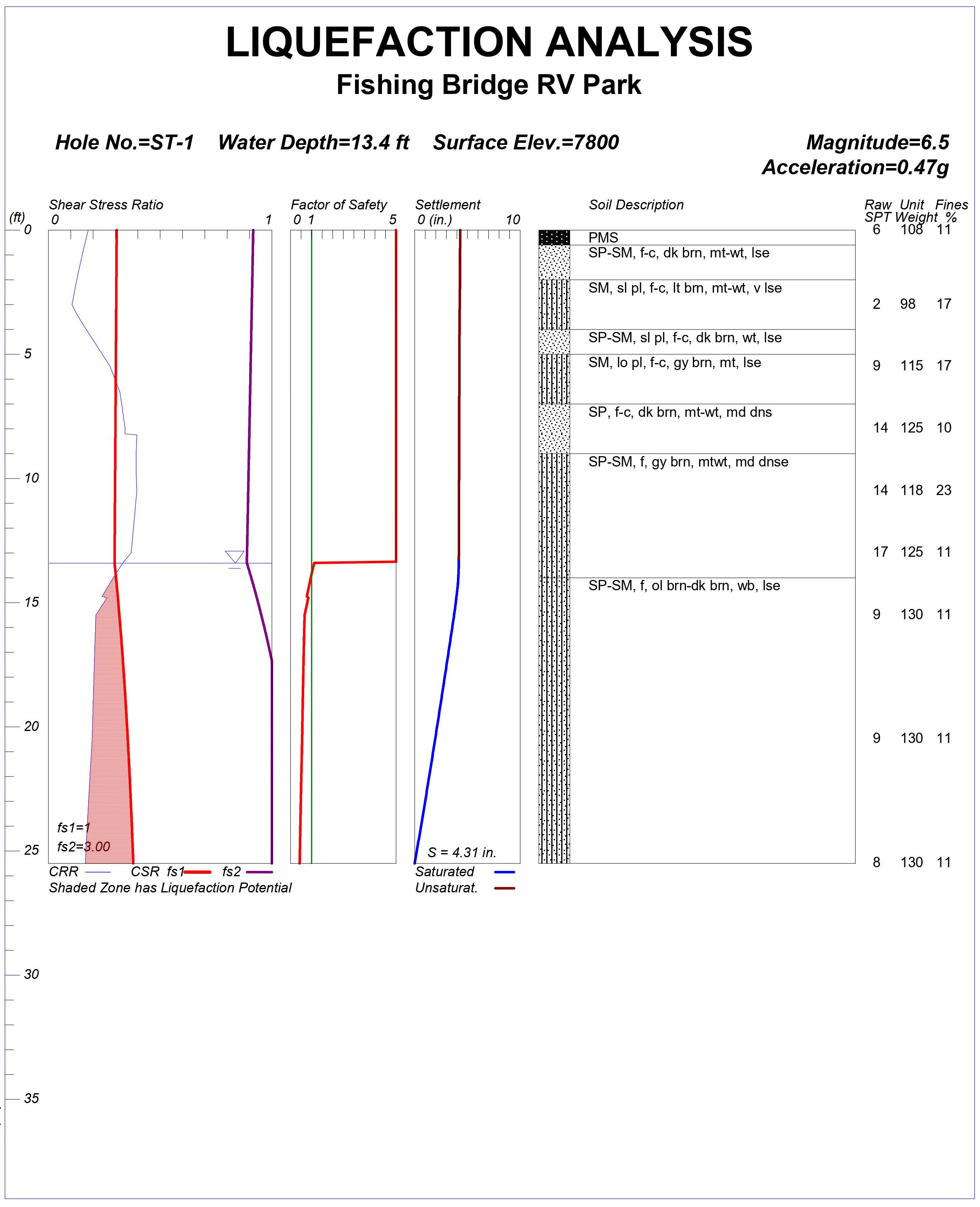Seismic Hazard and Liquefaction Analysis
SK Geotechnical can provide qualified engineers to identify potential seismic hazards, perform detailed seismic analyses, and provide mitigation recommendations. Our experienced geotechnical engineers are highly qualified for identifying and conducting the following seismic hazard analyses:
- Determine anticipated ground forces

- Liquefaction potential
- Slope instability
- Lateral ground spread
- Surface displacement due to faulting or spreading
Based on the level of identified seismic hazards, more detailed analysis can be performed consisting of:
- Liquefaction analysis with LiquefyPro, Liq-IT
- Lateral ground spread, Liq-IT
- Lateral spread-induced pressures
- Seismic-induced wall pressures, Mononobe-Okabe analysis
- Seismic-induced settlement, LiquefyPro, Liq-IT
- Downdrag load on pile and drilled shaft foundations due to liquefaction
- Embankment stability under earthquake loading and liquefied soil conditions, SVSlope
For critical structures and facilities, detailed site specific response analysis can be performed to establish a site specific response spectrum for the actual soil and bedrock conditions. Our firm can complete the full range of services required for this rigorous analysis. This work consists of:
- Performing deep borings, in-situ testing, and seismic shear wave measurements to determine an accurate soil and bedrock profile.
- Perform site specific probabilistic seismic hazard analysis to establish design ground motions.
- Perform nonlinear and effective stress site specific response analysis (Shake 2000 and D-MOD2000)
- Complete detailed liquefaction analysis based on site specific response analysis.
- Perform Newmark deformation analysis
- Establish site specific response spectrum for design
Based on the seismic analysis, both simplified and detailed, appropriate mitigation measures can be implemented. These measures may consist of:
- Soil densification and/or replacement to reduce liquefaction potential, stone columns, compaction grouting, earthquake drains, blast densification.
- Slope reinforcement with geosynthetics, tiebacks, flattening, or buttresses to resist horizontal seismic forces.
Lateral and axial capacity design for driven pile and drilled shaft foundations to resist lateral spread-induced pressures and downdrag load can be completed.
